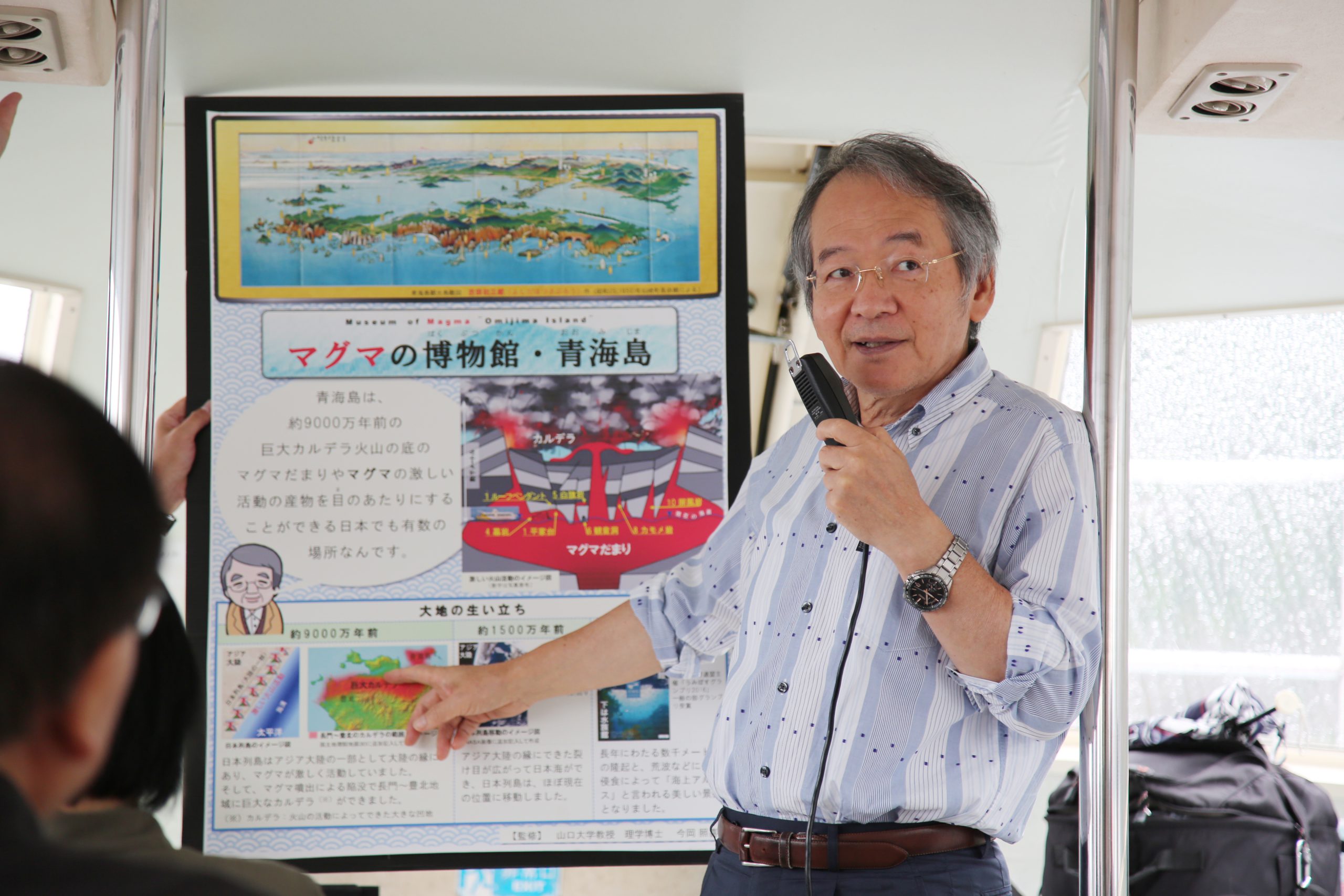- >
- Nanavi News
- >
- Report on the third day of the Nagato Tourism Concierge Training Course
Report on the third day of the Nagato Tourism Concierge Training Course
-
Last updated:
Jul 14, 2019
-
About the writer:
Nagato Tourism Convention Association

Two Worlds of Qinghai Island
The third session of the "Nagato Tourism Concierge Training Course" was held on Saturday, July 13.
This course consists of two parts: a "Basic Course" to acquire knowledge of Nagato City and a "Hospitality Course" to enhance your hospitality skills. This course is designed to improve your ability to welcome tourists with concierge-like hospitality. The Basic Course is scheduled from June to August, with lectures and hands-on experiences over a total of four days.
The third day of the tour will take place on Qinghai Island and the Misumi district.
We will start with a ride on the "Pink Citrus" of the Qinghai Island Tourist Steamship, which circles the island.


On board, Professor Teruki Imaoka of the Yamaguchi University Graduate School, who is also the president of the Yamaguchi Geographical Society, introduced the origins of Aomi Island, which was created by magma activity about 90 million years ago.



The "Maritime Alps," a group of oddly shaped rocks, has attracted much attention, but from a geological viewpoint, one can see red and black rocks and patterns of white magma mixed with black magma one after another. It is said to be one of the few places in Japan where such deep underground products of volcanic activity can be seen.



The sightseeing boat then lands on the island from Shizuura facing the bay.

At Qinghai Island Camping Village, a three-minute walk away, there was also a talk on geology by Professor Imaoka.
Unlike on the ship, traces of former volcanic activity can be seen in places that anyone can touch.



The second period was followed by a lecture by diving instructor Tsutomu Sasagawa at the mini-visitor center.
The actual wetsuits, cylinders, and underwater filming equipment used were introduced, while explanations were given with various videos taken underwater.


Qinghai Island is a place where a wide variety of life can be seen due to the mixing of warm and cold currents.
Another feature of Qinghai Island is that on days when a strong southerly wind blows, a phenomenon called "upwelling current" occurs, in which the seawater from the coast and the deep sea are swapped, and deep-sea creatures wander into the area mixed in with this current. Because some of these creatures can only be observed on Qinghai Island, it is a spot that attracts the attention of divers and underwater photographers from all over Japan.

Mr. Sasagawa talks about the richness of the ocean, the topography, and the seaweed on Qinghai Island.
It was a fulfilling time to explore the charms of Qinghai Island from two different perspectives.


Great people produced by Misumi
In the afternoon, we went to the Misumi district.
At the Seifu Murata Memorial Museum, Director Kazunori Nakano gave a quiz-style lecture.


The tour traces the achievements of Murata Seifu, who devoted himself to rebuilding the clan's finances, including the "Shihaku Policy," which encouraged the production of paper, wax, rice, and salt. From his childhood nickname to the life of Shufu Masanosuke, who succeeded to Seifu's will, the light-hearted narration by Director Nakano drew the audience in and made the hour go by quickly.


In the fourth period, we will visit the Yasuo Kagetsu Museum of Art, which traces the life of Yasuo Kagetsu, a Western-style painter known for his "Siberian Series.

We began with a walk through the museum, guided by Ito Maruo, curator, as if it were a gallery talk.


From the trajectory of the museum's opening as a town museum in 1993 to detailed explanations of the paintings by Kozuki. Touching on life at the time and the changes in the paintings over the years, he spoke about the exhibits in a way that would change the way one looks at them.


At the end of the exhibition, the actual "paint box" that went to Siberia with the painter Kougetsu and returned was specially exhibited.
Together with the "paint box" painted as a motif, the participants stared at it quietly.

It is only for those who have spent time in the area that the attractions described by a professional eye are often surprising discoveries.
The day was filled with many scenes that made us realize once again that we have resources here that we can be proud of throughout the country.
The next and final day of the course will be a four-day on-site training and the "Nagato Tourism and Culture Certification Test," in which participants will take questions from the textbook. Nanavi will continue to report on the course.



